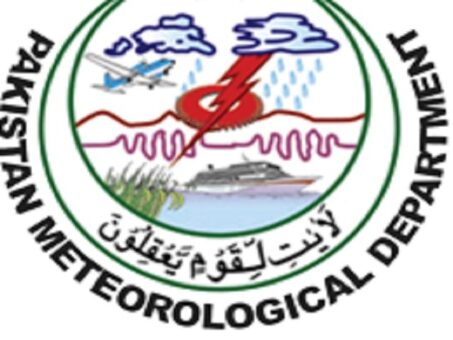PkRevenue.com- Pakistan is expected to experience up to 60 percent more rainfall than usual during the upcoming monsoon season, according to the National Disaster Management Authority (NDMA) and the Pakistan Meteorological Department (PMD).
This forecast was revealed during a high-level coordination conference on Tuesday, chaired by NDMA Chairman Lieutenant General Inam Haider Malik. The meeting included senior officials from the Pakistan Met Office, relevant federal ministries, provincial departments, and other stakeholders to discuss and prepare for the imminent monsoon rains.
The conference focused on pre-monsoon planning and risk assessment to mitigate the potential impacts of seasonal floods and related disasters. The technical teams of the NDMA and Pakistan Meteorological Department forecasted 40 to 60 percent above normal rains nationwide, warning of potential riverine flooding in low-lying areas. The forecast indicates that North Punjab, South Sindh, and Balochistan are likely to experience significant rainfall. In contrast, Khyber-Pakhtunkhwa (KPK) and Gilgit-Baltistan (G-B) could face riverine and flash floods due to glacier melting and glacial lake outburst floods (GLOF).
The Pakistan Met Office presented the seasonal monsoon forecast, highlighting regions most likely to be affected by heavy rainfall and potential flooding. This forecast is crucial for planning and response activities, enabling authorities to take proactive measures.
The NDMA’s technical team discussed identifying vulnerable areas susceptible to GLOFs and the development of detailed hazard maps to illustrate potential flood pathways and impact zones. The meeting also reviewed an impact model designed to estimate affected areas, populations needing relocation, and at-risk infrastructure.
NDMA Chairman Lieutenant General Inam Haider Malik emphasized the importance of a coordinated approach between federal and provincial departments for monsoon preparedness. “By working together and sharing critical information, we can better protect our communities and reduce the impact of natural disasters,” he said. The chairman reiterated the commitment to proactive disaster management and resilience building.
He stressed the need for preparedness by learning from past experiences and highlighted the necessity for timely training of responders and reviewing stock positions for summer contingencies. This preparation includes tackling heatwaves, droughts, GLOFs, and cyclones. He called for tangible actions before disasters strike, emphasizing proactive measures to mitigate disaster impacts. The NDMA will continue to monitor the situation closely and collaborate with all relevant stakeholders to ensure a timely and effective response to any emergencies arising from the monsoon season.
The Ministry of National Health Services and Regulations (MoNHSR&C) outlined a comprehensive plan for monitoring and controlling vector and waterborne diseases, expected to rise during the monsoon season. The Federal Flood Commission (FFC) provided updates on the telemetry stations network and early warning mechanisms established along the Kirthar and Suleman Ranges to ensure timely and accurate flood alerts.
The Pakistan Commission for Indus Waters (PCIW) briefed the conference on data-sharing protocols for monitoring the Eastern Rivers, emphasizing the importance of inter-agency coordination for effective flood management.
With these preparations, Pakistan aims to tackle the challenges posed by the upcoming monsoon season, ensuring the safety and well-being of its citizens.
